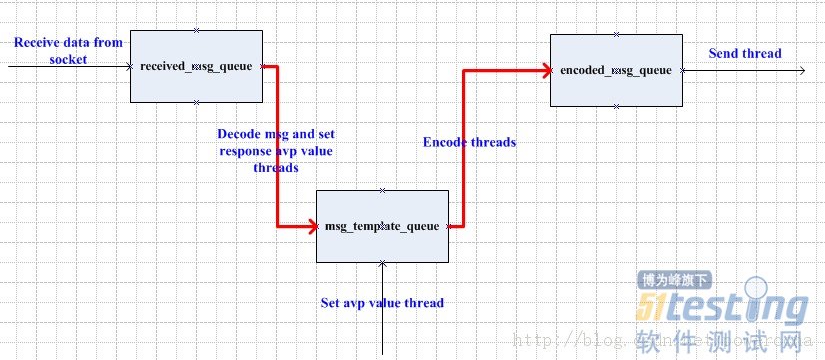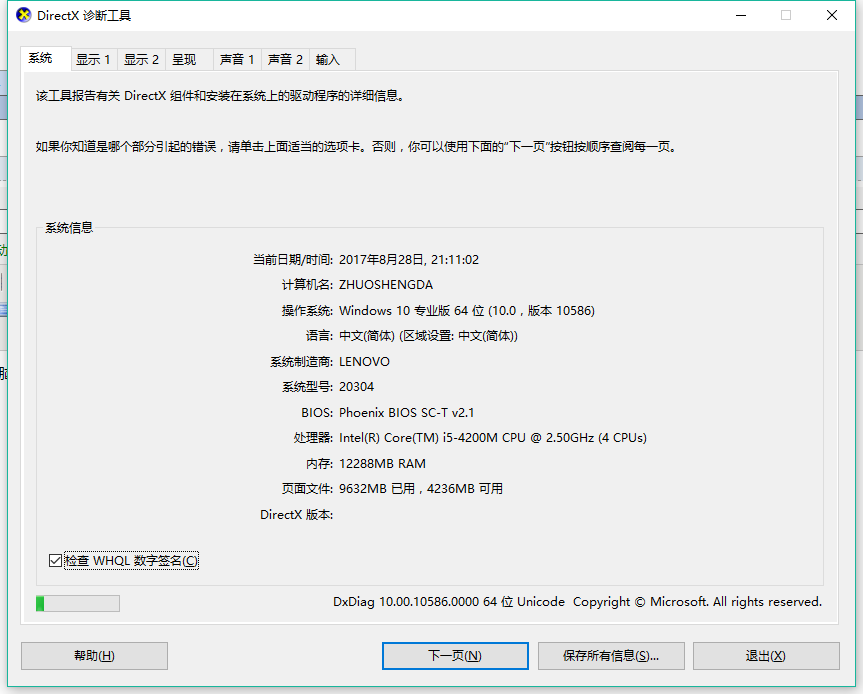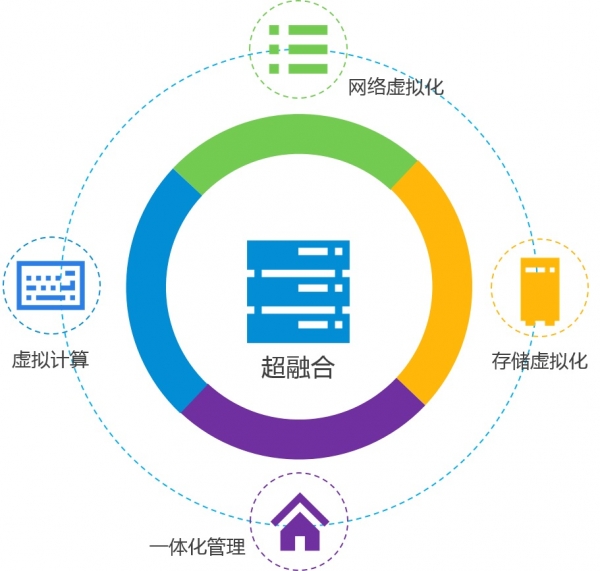Java线程:新特征-线程池
Sun在Java5中,对Java线程的类库做了大量的扩展,其中线程池就是Java5的新特征之一,除了线程池之外,还有很多多线程相关的内容,为多线程的编程带来了极大便利。为了编写高效稳定可靠的多线程程序,线程部分的新增内容显得尤为重要。
有关Java5线程新特征的内容全部在java.util.concurrent下面,里面包含数目众多的接口和类,熟悉这部分API特征是一项艰难的学习过程。目前有关这方面的资料和书籍都少之又少,大所属介绍线程方面书籍还停留在java5之前的知识层面上。
当然新特征对做多线程程序没有必须的关系,在java5之前通用可以写出很优秀的多线程程序。只是代价不一样而已。
线程池的基本思想还是一种对象池的思想,开辟一块内存空间,里面存放了众多(未死亡)的线程,池中线程执行调度由池管理器来处理。当有线程任务时,从池中取一个,执行完成后线程对象归池,这样可以避免反复创建线程对象所带来的性能开销,节省了系统的资源。
在Java5之前,要实现一个线程池是相当有难度的,现在Java5为我们做好了一切,我们只需要按照提供的API来使用,即可享受线程池带来的极大便利。
Java5的线程池分好多种:固定尺寸的线程池、可变尺寸连接池、。
在使用线程池之前,必须知道如何去创建一个线程池,在Java5中,需要了解的是java.util.concurrent.Executors类的API,这个类提供大量创建连接池的静态方法,是必须掌握的。
一、固定大小的线程池
import java.util.concurrent.Executors;
import java.util.concurrent.ExecutorService;
/**
* Java线程:线程池-
*
* @author Administrator 2009-11-4 23:30:44
*/
public class Test {
public static void main(String[] args) {
//创建一个可重用固定线程数的线程池
ExecutorService pool = Executors.newFixedThreadPool(2);
//创建实现了Runnable接口对象,Thread对象当然也实现了Runnable接口
Thread t1 = new MyThread();
Thread t2 = new MyThread();
Thread t3 = new MyThread();
Thread t4 = new MyThread();
Thread t5 = new MyThread();
//将线程放入池中进行执行
pool.execute(t1);
pool.execute(t2);
pool.execute(t3);
pool.execute(t4);
pool.execute(t5);
//关闭线程池
pool.shutdown();
}
}
class MyThread extends Thread{
@Override
public void run() {
System.out.println(Thread.currentThread().getName()+"正在执行。。。");
}
}
import java.util.concurrent.ExecutorService;
/**
* Java线程:线程池-
*
* @author Administrator 2009-11-4 23:30:44
*/
public class Test {
public static void main(String[] args) {
//创建一个可重用固定线程数的线程池
ExecutorService pool = Executors.newFixedThreadPool(2);
//创建实现了Runnable接口对象,Thread对象当然也实现了Runnable接口
Thread t1 = new MyThread();
Thread t2 = new MyThread();
Thread t3 = new MyThread();
Thread t4 = new MyThread();
Thread t5 = new MyThread();
//将线程放入池中进行执行
pool.execute(t1);
pool.execute(t2);
pool.execute(t3);
pool.execute(t4);
pool.execute(t5);
//关闭线程池
pool.shutdown();
}
}
class MyThread extends Thread{
@Override
public void run() {
System.out.println(Thread.currentThread().getName()+"正在执行。。。");
}
}
pool-1-thread-1正在执行。。。
pool-1-thread-1正在执行。。。
pool-1-thread-1正在执行。。。
pool-1-thread-1正在执行。。。
pool-1-thread-2正在执行。。。
Process finished with exit code 0
pool-1-thread-1正在执行。。。
pool-1-thread-1正在执行。。。
pool-1-thread-1正在执行。。。
pool-1-thread-2正在执行。。。
Process finished with exit code 0
二、单任务线程池
在上例的基础上改一行创建pool对象的代码为:
//创建一个使用单个 worker 线程的 Executor,以无界队列方式来运行该线程。
ExecutorService pool = Executors.newSingleThreadExecutor();
ExecutorService pool = Executors.newSingleThreadExecutor();
输出结果为:
pool-1-thread-1正在执行。。。
pool-1-thread-1正在执行。。。
pool-1-thread-1正在执行。。。
pool-1-thread-1正在执行。。。
pool-1-thread-1正在执行。。。
Process finished with exit code 0
pool-1-thread-1正在执行。。。
pool-1-thread-1正在执行。。。
pool-1-thread-1正在执行。。。
pool-1-thread-1正在执行。。。
Process finished with exit code 0
对于以上两种连接池,大小都是固定的,当要加入的池的线程(或者任务)超过池最大尺寸时候,则入此线程池需要排队等待。
一旦池中有线程完毕,则排队等待的某个线程会入池执行。
三、可变尺寸的线程池
与上面的类似,只是改动下pool的创建方式:
//创建一个可根据需要创建新线程的线程池,但是在以前构造的线程可用时将重用它们。
ExecutorService pool = Executors.newCachedThreadPool();
ExecutorService pool = Executors.newCachedThreadPool();
pool-1-thread-5正在执行。。。
pool-1-thread-1正在执行。。。
pool-1-thread-4正在执行。。。
pool-1-thread-3正在执行。。。
pool-1-thread-2正在执行。。。
Process finished with exit code 0
pool-1-thread-1正在执行。。。
pool-1-thread-4正在执行。。。
pool-1-thread-3正在执行。。。
pool-1-thread-2正在执行。。。
Process finished with exit code 0
四、延迟连接池
import java.util.concurrent.Executors;
import java.util.concurrent.ScheduledExecutorService;
import java.util.concurrent.TimeUnit;
/**
* Java线程:线程池-
*
* @author Administrator 2009-11-4 23:30:44
*/
public class Test {
public static void main(String[] args) {
//创建一个线程池,它可安排在给定延迟后运行命令或者定期地执行。
ScheduledExecutorService pool = Executors.newScheduledThreadPool(2);
//创建实现了Runnable接口对象,Thread对象当然也实现了Runnable接口
Thread t1 = new MyThread();
Thread t2 = new MyThread();
Thread t3 = new MyThread();
Thread t4 = new MyThread();
Thread t5 = new MyThread();
//将线程放入池中进行执行
pool.execute(t1);
pool.execute(t2);
pool.execute(t3);
//使用延迟执行风格的方法
pool.schedule(t4, 10, TimeUnit.MILLISECONDS);
pool.schedule(t5, 10, TimeUnit.MILLISECONDS);
//关闭线程池
pool.shutdown();
}
}
class MyThread extends Thread {
@Override
public void run() {
System.out.println(Thread.currentThread().getName() + "正在执行。。。");
}
}
import java.util.concurrent.ScheduledExecutorService;
import java.util.concurrent.TimeUnit;
/**
* Java线程:线程池-
*
* @author Administrator 2009-11-4 23:30:44
*/
public class Test {
public static void main(String[] args) {
//创建一个线程池,它可安排在给定延迟后运行命令或者定期地执行。
ScheduledExecutorService pool = Executors.newScheduledThreadPool(2);
//创建实现了Runnable接口对象,Thread对象当然也实现了Runnable接口
Thread t1 = new MyThread();
Thread t2 = new MyThread();
Thread t3 = new MyThread();
Thread t4 = new MyThread();
Thread t5 = new MyThread();
//将线程放入池中进行执行
pool.execute(t1);
pool.execute(t2);
pool.execute(t3);
//使用延迟执行风格的方法
pool.schedule(t4, 10, TimeUnit.MILLISECONDS);
pool.schedule(t5, 10, TimeUnit.MILLISECONDS);
//关闭线程池
pool.shutdown();
}
}
class MyThread extends Thread {
@Override
public void run() {
System.out.println(Thread.currentThread().getName() + "正在执行。。。");
}
}
pool-1-thread-1正在执行。。。
pool-1-thread-2正在执行。。。
pool-1-thread-1正在执行。。。
pool-1-thread-1正在执行。。。
pool-1-thread-2正在执行。。。
Process finished with exit code 0
pool-1-thread-2正在执行。。。
pool-1-thread-1正在执行。。。
pool-1-thread-1正在执行。。。
pool-1-thread-2正在执行。。。
Process finished with exit code 0
五、单任务延迟连接池
在四代码基础上,做改动
//创建一个单线程执行程序,它可安排在给定延迟后运行命令或者定期地执行。
ScheduledExecutorService pool = Executors.newSingleThreadScheduledExecutor();
ScheduledExecutorService pool = Executors.newSingleThreadScheduledExecutor();
pool-1-thread-1正在执行。。。
pool-1-thread-1正在执行。。。
pool-1-thread-1正在执行。。。
pool-1-thread-1正在执行。。。
pool-1-thread-1正在执行。。。
Process finished with exit code 0
pool-1-thread-1正在执行。。。
pool-1-thread-1正在执行。。。
pool-1-thread-1正在执行。。。
pool-1-thread-1正在执行。。。
Process finished with exit code 0
六、自定义线程池
import java.util.concurrent.ArrayBlockingQueue;
import java.util.concurrent.BlockingQueue;
import java.util.concurrent.ThreadPoolExecutor;
import java.util.concurrent.TimeUnit;
/**
* Java线程:线程池-自定义线程池
*
* @author Administrator 2009-11-4 23:30:44
*/
public class Test {
public static void main(String[] args) {
//创建等待队列
BlockingQueue<Runnable> bqueue = new ArrayBlockingQueue<Runnable>(20);
//创建一个单线程执行程序,它可安排在给定延迟后运行命令或者定期地执行。
ThreadPoolExecutor pool = new ThreadPoolExecutor(2,3,2,TimeUnit.MILLISECONDS,bqueue);
//创建实现了Runnable接口对象,Thread对象当然也实现了Runnable接口
Thread t1 = new MyThread();
Thread t2 = new MyThread();
Thread t3 = new MyThread();
Thread t4 = new MyThread();
Thread t5 = new MyThread();
Thread t6 = new MyThread();
Thread t7 = new MyThread();
//将线程放入池中进行执行
pool.execute(t1);
pool.execute(t2);
pool.execute(t3);
pool.execute(t4);
pool.execute(t5);
pool.execute(t6);
pool.execute(t7);
//关闭线程池
pool.shutdown();
}
}
class MyThread extends Thread {
@Override
public void run() {
System.out.println(Thread.currentThread().getName() + "正在执行。。。");
try {
Thread.sleep(100L);
} catch (InterruptedException e) {
e.printStackTrace();
}
}
}
import java.util.concurrent.BlockingQueue;
import java.util.concurrent.ThreadPoolExecutor;
import java.util.concurrent.TimeUnit;
/**
* Java线程:线程池-自定义线程池
*
* @author Administrator 2009-11-4 23:30:44
*/
public class Test {
public static void main(String[] args) {
//创建等待队列
BlockingQueue<Runnable> bqueue = new ArrayBlockingQueue<Runnable>(20);
//创建一个单线程执行程序,它可安排在给定延迟后运行命令或者定期地执行。
ThreadPoolExecutor pool = new ThreadPoolExecutor(2,3,2,TimeUnit.MILLISECONDS,bqueue);
//创建实现了Runnable接口对象,Thread对象当然也实现了Runnable接口
Thread t1 = new MyThread();
Thread t2 = new MyThread();
Thread t3 = new MyThread();
Thread t4 = new MyThread();
Thread t5 = new MyThread();
Thread t6 = new MyThread();
Thread t7 = new MyThread();
//将线程放入池中进行执行
pool.execute(t1);
pool.execute(t2);
pool.execute(t3);
pool.execute(t4);
pool.execute(t5);
pool.execute(t6);
pool.execute(t7);
//关闭线程池
pool.shutdown();
}
}
class MyThread extends Thread {
@Override
public void run() {
System.out.println(Thread.currentThread().getName() + "正在执行。。。");
try {
Thread.sleep(100L);
} catch (InterruptedException e) {
e.printStackTrace();
}
}
}
pool-1-thread-1正在执行。。。
pool-1-thread-2正在执行。。。
pool-1-thread-2正在执行。。。
pool-1-thread-1正在执行。。。
pool-1-thread-2正在执行。。。
pool-1-thread-1正在执行。。。
pool-1-thread-2正在执行。。。
Process finished with exit code 0
pool-1-thread-2正在执行。。。
pool-1-thread-2正在执行。。。
pool-1-thread-1正在执行。。。
pool-1-thread-2正在执行。。。
pool-1-thread-1正在执行。。。
pool-1-thread-2正在执行。。。
Process finished with exit code 0
创建自定义线程池的构造方法很多,本例中参数的含义如下:
ThreadPoolExecutor
public ThreadPoolExecutor(int corePoolSize,int maximumPoolSize,long keepAliveTime,TimeUnit unit,BlockingQueue<Runnable> workQueue)
- 用给定的初始参数和默认的线程工厂及处理程序创建新的 ThreadPoolExecutor。使用
Executors工厂方法之一比使用此通用构造方法方便得多。- 参数:
corePoolSize- 池中所保存的线程数,包括空闲线程。maximumPoolSize- 池中允许的最大线程数。keepAliveTime- 当线程数大于核心时,此为终止前多余的空闲线程等待新任务的最长时间。unit- keepAliveTime 参数的时间单位。workQueue- 执行前用于保持任务的队列。此队列仅保持由 execute 方法提交的 Runnable 任务。 抛出:IllegalArgumentException- 如果 corePoolSize 或 keepAliveTime 小于零,或者 maximumPoolSize 小于或等于零,或者 corePoolSize 大于 maximumPoolSize。NullPointerException- 如果 workQueue 为 null
自定义连接池稍微麻烦些,不过通过创建的ThreadPoolExecutor线程池对象,可以获取到当前线程池的尺寸、正在执行任务的线程数、工作队列等等。
有关Java5线程池的内容到此就没有了,更多的内容还需要研读API来获取。
本文出自 “熔 岩” 博客,请务必保留此出处http://lavasoft.blog.51cto.com/62575/222078














